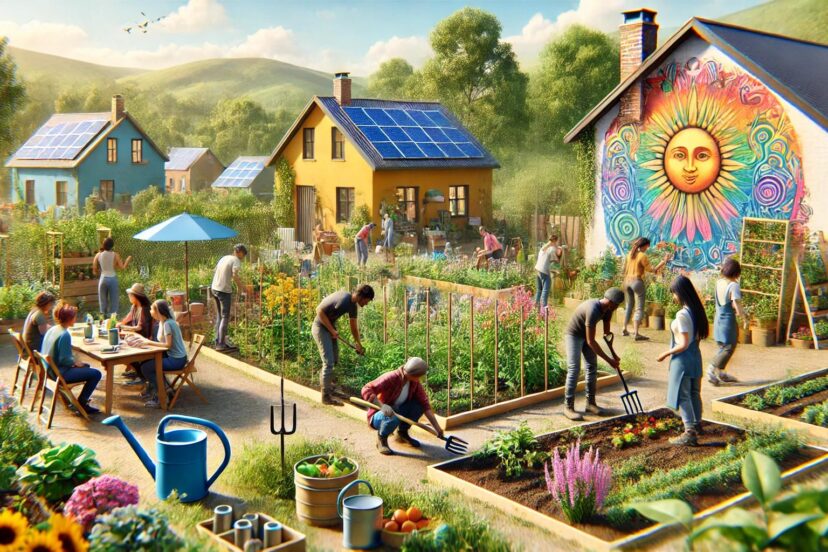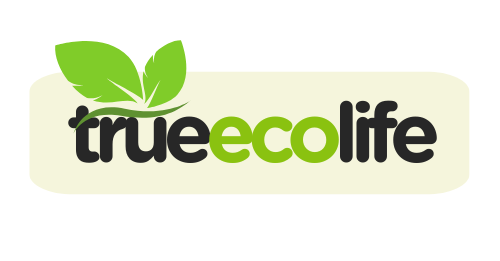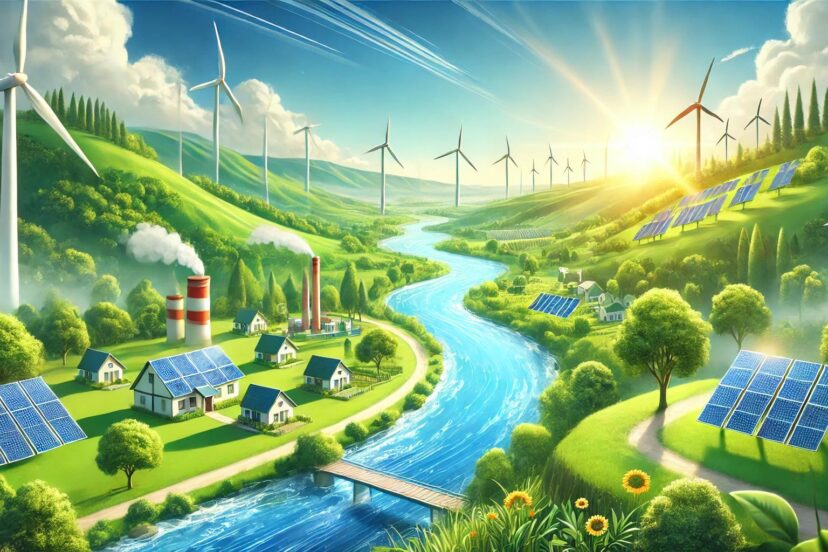The Three Pillars of Sustainability: Building a Greener Future
We may earn a commission for purchases made using our links. Please see our disclosure to learn more.
It is sad that we are facing an environmental crisis today like climate change, resource depletion, and even pollution. How san we solve these problems and ensure that future generations will live in a greener world? We need to understand the three pillars of sustainability to make a positive impact. And if we balance these three, we can create solutions that protect the Earth, support local communities, and drive long-term economic success. Let’s dive into what they truly mean and why they matter.
Which 3 Factors Make Up Sustainability?
Think of the three pillars as the ingredients in your favorite recipe. They must blend perfectly to create something remarkable. Environmental sustainability ensures the planet thrives, social sustainability uplifts communities, and economic sustainability builds a foundation for enduring progress. Like threads in a tapestry, they weave together to address the intricate challenges of today. Remove one thread, and the fabric begins to fray.
Environmental Sustainability: Protecting Our Planet
Imagine Earth as a treasure chest of finite resources. What we take out must be replenished—or we risk running on empty.
- Conserving Natural Resources
Take water, for instance. It’s something we often take for granted, yet every drop matters. Turning off the faucet while brushing your teeth may seem small, but multiply that by millions, and it becomes monumental. - Reducing Pollution
Pollution isn’t just litter in a park; it’s the insidious fog choking our skies and oceans. Recycling, choosing public transportation, or saying no to single-use plastics might feel like drops in a bucket, but those drops ripple outwards, creating waves of change. - Promoting Renewable Energy
Solar panels and wind turbines are not just innovations; they’re lifelines. By embracing renewable energy, we not only reduce our reliance on depleting fossil fuels but also ensure our children inherit a cleaner, more vibrant Earth.
Social Sustainability: Fostering Communities
At its heart, social sustainability is about people. It’s the glue that holds societies together, making sure no one is left behind.
- Equality and Fairness
Think back to moments when you felt unseen. Social sustainability ensures every voice is heard, every individual valued. It’s about building bridges, not walls. - Access to Education and Healthcare
Education isn’t just about books; it’s about opportunities. Healthcare isn’t just about curing illness; it’s about nurturing potential. Together, they empower communities to grow, thrive, and weather storms. - Community Engagement
Picture a neighborhood coming together for a clean-up drive. The camaraderie, the shared purpose—that’s community engagement at its finest. When people feel invested in their surroundings, they create spaces that radiate strength and unity.

Economic Sustainability: Building for the Long Term
Economic sustainability ensures growth doesn’t come at the cost of our planet or people. It’s about progress that lasts.
- Sustainable Business Practices
A truly sustainable business is like a gardener nurturing soil, ensuring it remains fertile for generations. Ethical sourcing, green manufacturing, and fair wages create a ripple effect, benefiting not just the company but also the world around it. - Job Creation
Imagine a future where every job contributes to a greener planet. From renewable energy sectors to sustainable agriculture, meaningful work fuels both economies and hope. - Innovative Solutions
Whether it’s harnessing the power of algae to produce biofuel or designing products from recycled waste, innovation holds the key to an economically sound and sustainable future.
Why Are These Pillars Interconnected?
Picture that stool again. If one leg weakens, the others struggle to compensate. Sustainability is no different. Economic prosperity that ignores environmental costs crumbles. Social equity that neglects economic opportunity falters. True sustainability arises from balance—each pillar holding the others steady.
Key Products to Support Sustainability
Here are some eco-friendly products you can incorporate into your daily life to support the three pillars of sustainability:
Environmental Sustainability:
- Reusable Water Bottles – Ditch single-use plastics and opt for stainless steel or glass bottles.
- Solar-Powered Chargers – Harness the power of the sun to charge your devices.
Social Sustainability:
- Fair-Trade Coffee – Support ethical farming practices with certified fair-trade products.
- Locally-Sourced Food – Buy from farmers’ markets or community-supported agriculture programs.
Economic Sustainability:
- Energy-Saving Appliances – Invest in refrigerators, washing machines, and air conditioners with high energy ratings.
- Recycled Paper Products – Opt for notebooks, printer paper, and packaging made from recycled materials.
These products not only help you adopt sustainable practices but also encourage businesses to prioritize eco-friendly and ethical solutions. Every small purchase adds up to significant change!
Check this out:
Challenges in Achieving Sustainability
The road to sustainability isn’t without hurdles. Climate change, inequality, and economic disparities constantly test our resolve.
- Climate Change: The Ultimate Test
Each storm, wildfire, or flood serves as a stark reminder. The clock is ticking, and action can no longer wait. - Social Inequality
A fractured society cannot flourish. Bridging divides—be they economic, educational, or social—is essential for collective progress. - Economic Instability
An unstable economy is like quicksand, pulling everything into chaos. Sustainable systems must prioritize resilience and adaptability.
How Can Individuals Contribute?
Here’s the truth: You don’t need a cape to be a hero.
- Make Sustainable Choices
Whether it’s swapping plastic bags for cloth ones or supporting eco-friendly brands and products like sustainable sneakers, small decisions have profound impacts. - Educate Yourself and Others
Start a conversation. Share a fact. Enlightenment spreads like wildfire, igniting change. - Support Green Initiatives
Every tree planted, every petition signed, every effort counts. You’re not just making a change—you’re inspiring one.
Exploring the Foundations and Applications of Sustainability
The three pillars of sustainability—environmental, social, and economic—have evolved significantly over time. A comprehensive study titled “Three pillars of sustainability: in search of conceptual origins” explores the historical and theoretical roots of this framework, offering critical insights into its development. Building on this, the research “The evolution of sustainability models, from descriptive to strategic approaches” examines how these pillars have transitioned from abstract concepts to actionable strategies, particularly within the wine sector. Together, these studies underscore the importance of integrating sustainability principles into both theory and practice.
Final Thoughts
Sustainability is more than a concept—it’s a promise. A promise that the air we breathe, the communities we cherish, and the opportunities we dream of will not be fleeting. By embracing the three pillars, we ensure the Earth remains not just a place to survive but a place to thrive.
FAQs About the Three Pillars of Sustainability
1. What are the three pillars of being sustainable?
The three main aspects of sustainability are social, economic, and environmental. Together, they create a balanced framework for a resilient future.
2. How do these pillars interact?
Imagine a three-legged stool—remove one leg, and the stool tumbles. Similarly, these pillars support one another. For instance, economic growth that harms the environment or excludes communities isn’t sustainable.
3. Why is sustainability important?
Sustainability ensures resources, opportunities, and thriving communities are available—not just for us but for generations to come. Building a better world one choice at a time is the ultimate goal.
4. Can individuals make a difference?
Absolutely! Change often starts small. Whether it’s conserving energy, reducing waste, or supporting ethical brands, individual actions collectively lead to monumental impacts.
5. What’s the biggest challenge to achieving sustainability?
The journey isn’t easy. Climate change, inequality, and economic disparities remain major obstacles. Balancing short-term needs with long-term goals is a constant challenge.




